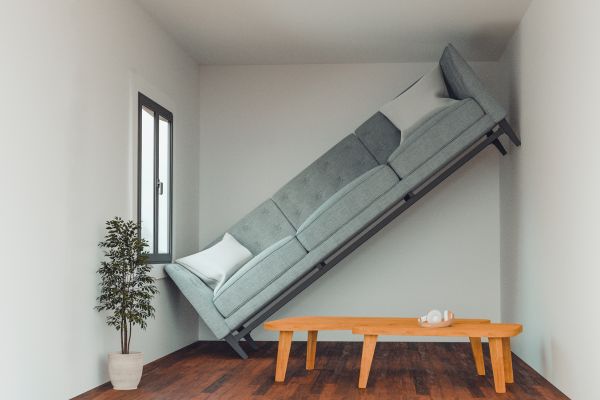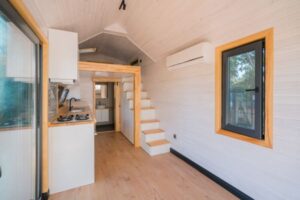In a world that celebrates constant connectivity and material abundance, the concept of minimalism emerges as a powerful and refreshing counterpoint. In the realm of interior design, the art of minimalism has captivated the hearts of many, offering a transformative approach to creating serene and harmonious living spaces. As urban centers grow denser, and the demand for small apartments rises, the allure of minimalism becomes more relevant than ever. Embracing simplicity, functionality, and mindful curation, the art of minimalism empowers small apartment dwellers to craft a haven of tranquility and purpose within the confines of limited square footage.
The philosophy of minimalism extends far beyond mere aesthetics; it becomes a way of life—a deliberate choice to shed the unnecessary and embrace the essential. In this article, we embark on an enlightening journey to explore the art of minimalism and its profound impact on small apartments. Unveiling five key strategies, we delve into the heart of minimalism, from decluttering and space optimization to selecting essential furniture and embracing natural light. As we uncover the principles of this art form, we discover that minimalism is not about sacrificing comfort or style, but rather an invitation to savor the beauty of simplicity and find solace in the art of living with less.
Decluttering for Serenity
At the core of the art of minimalism lies the act of decluttering—a transformative process of letting go of possessions that no longer serve a purpose or bring joy. In a small apartment, where every square inch is precious, decluttering becomes an essential step toward creating a serene and spacious environment.
Minimalism encourages inhabitants to assess their belongings thoughtfully and discern what truly adds value to their lives. This mindful curation applies not only to physical items but also to digital clutter, such as files and apps on electronic devices. By decluttering both the physical and digital realms, small apartment dwellers can free themselves from distractions and foster a sense of tranquility within their living spaces.
Embracing the art of decluttering is a transformative journey that goes beyond organizing possessions—it becomes an introspective process of evaluating one’s values and priorities. By curating a home filled with items that hold genuine meaning and purpose, small apartment dwellers can embrace the liberating essence of minimalism and create a space that nurtures the soul.
Space Optimization through Minimalist Design
In small apartments, every square foot counts, making space optimization a key element of the art of minimalism. Minimalist design prioritizes functionality and efficiency, ensuring that each element within the living space serves a purpose and contributes to the overall harmony of the environment.
Furniture selection plays a crucial role in space optimization. Minimalist furniture designs boast clean lines, sleek profiles, and multifunctionality, making them ideal for small living spaces. Foldable or stackable furniture allows for easy storage when not in use, while wall-mounted shelves and cabinets maximize vertical space.
Color and lighting also play a significant role in space optimization. Light, neutral tones create an illusion of openness and airiness, while ample natural light enhances the sense of space. Minimalist window treatments, such as sheer curtains or blinds, allow sunlight to flood the apartment, blurring the lines between indoor and outdoor spaces.
By embracing minimalist design principles, small apartment dwellers can create an environment where every element coalesces seamlessly, promoting a sense of spaciousness and purposeful living.
Essential Furniture and Thoughtful Placement
In the pursuit of minimalism, the selection and placement of furniture become deliberate choices that define the character of the living space. Minimalist interior design revolves around essential pieces that serve core functions while exuding timeless elegance.
In a small apartment, every piece of furniture should be carefully chosen to optimize space and reflect the inhabitants’ lifestyle. Streamlined sofas and chairs, complemented by minimalist coffee tables, create a cozy and inviting seating area without overwhelming the room.
Thoughtful furniture placement is equally important in minimalist design. Avoiding cluttered arrangements and leaving sufficient breathing room between furniture pieces enhance the sense of openness and flow within the apartment. By strategically placing essential furniture, small apartment dwellers can create a sense of balance and harmony that resonates with the principles of minimalism.
Embracing Natural Light and Openness
One of the defining features of minimalism is the celebration of open spaces and abundant natural light. In small apartments, where space may be limited, inviting natural light indoors becomes a transformative design choice that elevates the living experience.
Minimalist interior design often incorporates large windows and glass doors that invite the outdoors inside. Removing heavy window treatments or opting for sheer curtains allows sunlight to permeate the apartment, making it feel more spacious and airy.
To further enhance the connection with the outside, minimalist living spaces may extend onto balconies or terraces. These outdoor extensions become natural extensions of the interior, blurring the boundaries between the inside and outside world.
By embracing natural light and openness, small apartment dwellers can imbue their living spaces with a sense of serenity and connect with the ever-changing beauty of the natural world.
Mindful Material Choices
In the art of minimalism, every material choice is a deliberate statement of purpose and aesthetics. Minimalist interior design embraces materials that emphasize simplicity, durability, and sustainability.
Natural materials, such as wood, stone, and metal, are often preferred for their timeless appeal and earthy charm. These materials add warmth and texture to the living space without overwhelming the minimalist aesthetic.
Minimalism also encourages the use of recycled or upcycled materials, promoting a sustainable approach to design. Incorporating eco-friendly materials not only reduces the environmental impact but also aligns with the mindful and conscious philosophy of minimalism.
By mindfully selecting materials that resonate with the principles of minimalism, small apartment dwellers can create an environment that reflects their values and showcases the art of living harmoniously with the natural world.
Conclusion
As we conclude our exploration of the art of minimalism in small apartments, we find ourselves immersed in the transformative power of simplicity and mindful living. From decluttering and space optimization to essential furniture and the embrace of natural light, each strategy embodies the essence of minimalism—a celebration of the beauty found in simplicity.
The art of minimalism empowers small apartment dwellers to craft living spaces that are a reflection of their values and priorities. By curating environments filled with purposeful possessions and mindful design choices, the living experience transcends the physical space, becoming a journey of self-discovery and tranquility.
In a world that often overwhelms with constant stimuli, the art of minimalism becomes a haven of serenity and respite. Small apartment dwellers can revel in the beauty of simplicity, creating a space that nurtures both body and soul. As we embrace the art of minimalism, we are reminded that less is indeed more—an invitation to savor the present moment, cultivate intentionality, and find joy in the quiet beauty of a simplified life.



